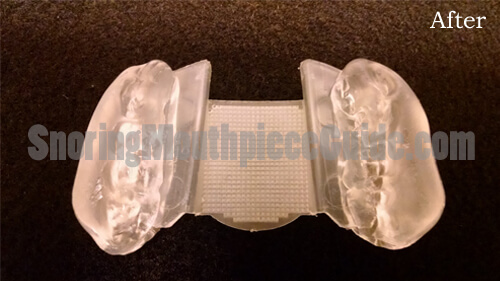4.5 Star Rating
Basic Info About The SnoreTek Chinstrap & Mouthpiece Combo
In the United States alone, it’s estimated that nearly 90 million people have a snoring problem. Considering there are approximately 325 million people residing in the US, snorers make up a significant portion of the overall population.
While snoring is often considered just a bedroom nuisance, some snorers have a more serious condition known as Obstructive Sleep Apnea (OSA) in which breathing can stop several hundred times throughout the night while asleep. It’s important to understand that OSA is a condition that should be diagnosed and treated by a qualified physician. In some cases, a mouthpiece such as the SnoreTek along with a chinstrap can help with not only snoring but also mild to moderate OSA in adults.
About The Company Behind the SoreTek Combo Pack
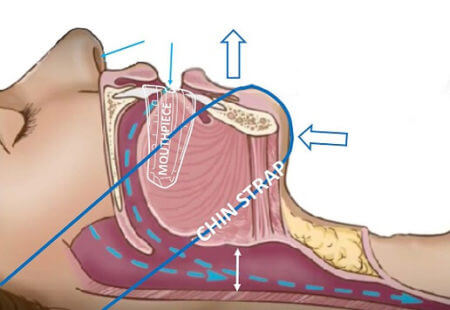
The SnoreTek’s chinstrap and mouthpiece combo holds the jaw forward and closed, allowing air to flow freely into and out of the mouth and nose and through the airway
The inventor of the SnoreTek treatment product line is a dentist and member of the American Academy of Sleep Medicine and has spent the last 15 years focusing on the treatment of sleep breathing disorders.
The inventor himself suffered from snoring and endured multiple surgeries in an effort to alleviate his problem. Unfortunately, all surgical and non-surgical attempts failed until he later discovered the Mandibular Advancement Device which has since provided relief for him and his wife.
Excited about his discovery, he then set out to find a mouthpiece with the qualities of comfort and effectiveness that he desired at a price that nearly anyone could afford. This quest led him to Meditas Ltd, a European Mouthguard company who had developed a simple mouthpiece for snoring and sleep apnea treatment. SnoreTek is now the exclusive online distributor for the SnoreTek Mouthpiece in the US.
The SnoreTek Mouthpiece was registered with the FDA in May 2014 as a class II medical device before being sold online as an affordable DIY Mandibular Advancement Device to assist with snoring and Obstructive Sleep Apnea.
Ongoing research has shown the effectiveness of using a chin strap in combination with the mouthpiece. The SnoreTek chinstrap is another product that is sold by the same company. It’s basically a neoprene chinstrap that wraps around the back of the head and stretches around the chin. While the SnoreTek serves several functions including preventing CPAP stomach bloating (Aerophagia), when used with the SnoreTek mouthpiece its primary purpose is to help hold the jaw forward and closed to prevent the mouthpiece from falling out. The problem with most snoring mouthpiece is that they often fall out while asleep, which of course will render it useless. This happens because the jaw drops back in many situations despite having the mouthpiece. The SnoreTek chinstrap keeps the jaw closed and forward which prevents this from happening.
Recognizing the issue of the jaw-dropping back and mouthpieces falling out, he decided to pair the SnoreTek Mouthpiece with the SnoreTek Chinstrap to create the perfect marriage of two unique products to combat one issue which of course is snoring (OSA in some cases). While both products can be effective when used individually, the manufacturer recommends using a combination of both the chinstrap and mouthpiece for the best results.
The SnoreTek Mouthpiece
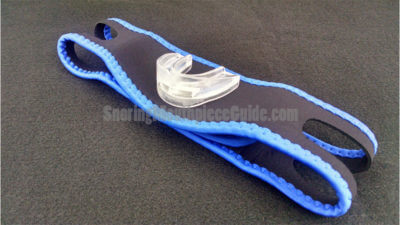 The SnoreTek Mouthpiece is a soft colorless thermoplastic one-piece mouthguard that measures 2 3/8″ at its widest point and 1 7/8″ deep with a thickness of 1″. During the fitting process, the plastic material becomes pliable and compresses, making the mouthpiece more compact.
The SnoreTek Mouthpiece is a soft colorless thermoplastic one-piece mouthguard that measures 2 3/8″ at its widest point and 1 7/8″ deep with a thickness of 1″. During the fitting process, the plastic material becomes pliable and compresses, making the mouthpiece more compact.
While it resembles a sports mouthguard, unlike a sports guard, the SnoreTek features both and upper and lower trays. These trays have raised walls in which encompass both the upper and lower teeth. Sports mouthguards typically have only one tray and are often mistaken for snoring mouthpieces. They, however, do not hold the jaw forward and are ineffective at preventing snoring or apnea.
At the front of the mouthpiece, there is a large breather hole with a single support post in the middle to prevent collapse when biting down on the mouthpiece. This large breather hole is an important consideration for those who have a tendency to breathe through their mouth while asleep. It allows air to pass freely and allows for smooth breathing. The mouthpiece comes with a plug that’s inserted into the breather holes to help retain its shape during the fitting process.
The SnoreTek mouthpiece is made from a BPA free Ethylene Vinyl Acetate material that is latex free and is cleared by the Food and Drug Administration. When a Mouthpiece is FDA cleared, BPA free and Latex free, this typically indicates that it’s a trustworthy product and generally safe when used as directed.
Visit Website
How Does The SnoreTek Mouthpiece Work?
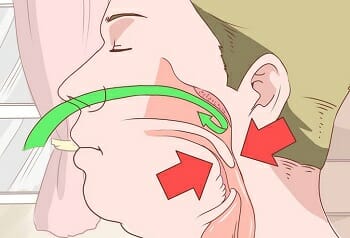
While asleep, the airway relaxes and can become restricted.
As mentioned, the SnoreTek is a medical device and is considered a Mandibular Advancement Device (MAD). What exactly is a MAD? As the name implies, “mandibular” references the mandible or jaw, while “advancement” means to move forward. The SnoreTek mouthpiece is a device that holds the jaw forward to prevent snoring. Numerous studies have scientifically proven MAD’s to assist with snoring and Obstructive Sleep Apnea.
In order to understand exactly how an MAD such as the SnoreTek works, it’s vital to first understand exactly why we snore. In most cases, snoring is caused by the vibration of collapsed airway tissues as air rushes in and out of the lungs while we are asleep. Airway tissues often become loose as we age. This problem can be magnified if the snorer is overweight as extra fat tends to become stored around the neck and places pressure against the airway.
The MAD is custom fitted inside of the mouth, much like a sports mouthguard. The user heats the entire device in hot water for about 2 minutes prior to biting down to take an impression. While taking an impression, the lower teeth are moved forward and held. Once cooled, the mouthpiece will retain its shape and will hold the jaw slightly forward when placed inside of the mouth before going to bed.
How does holding the jaw forward prevent snoring? The concept is actually quite simple. With the jaw in the forward position, loose airway tissues become tight and are unable to collide with each other. A tight airway allows air to flow unobstructed, ultimately putting an end to snoring and in some cases mild to moderate OSA. Take a look at the illustration to the right to better understand how this works.
In addition to the mouthpiece, the company also includes a SnoreTek chinstrap that can be used along with the mouthpiece for increased effectiveness. The chinstrap serves two purposes – it helps to prevent the mouthpiece from falling out while keeping the jaw forward and mouth closed.
Simply stated, the SnoreTek mouthpiece holds the jaw forward to tighten the airway which prevents snoring and in some instances of OSA while the chinstrap assists by holding the jaw in place.
The SnoreTek Chinstrap
The SnoreTek Chinstrap is a multi-functional chinstrap that is made from a soft neoprene material. Its edges are double stitched, which adds to the durability of the product. It has two holes cut out to allow the ears to pass through. The chinstrap has Velcro sewn into each end which allows you to fasten the ends together to form a loop. This Velcro fastening system allows for adjustment to nearly any size head.
As for uses, the Snoretek can assist with snoring, CPAP stomach bloating (Aerophagia), dry mouth, and also mouthpiece retention. When used with the mouthpiece in a combo pack, it’s primary function is, of course, to prevent the mouthpiece from falling out while keeping the jaw closed and forward.
How the SnoreTek Chin Strap Works
The elastic nature of the Snoretek is key to its function. It fits around the head and holds the jaw forward and mouth closed. Similar to a snoring mouthpiece, the forward action of the jaw helps to clear the airway and prevent airway collapse. While the SnoreTek chin strap can work by itself as a snoring solution, it may work best when paired with a mouthpiece such as the SnoreTek. Note: When the Chin Strap is used alone you must be able to breathe freely through your nose. However, when used in combination with the mouthpiece, you are easily able to breathe through your mouth if needed, because of the front breather hole.
Will They Help My Snoring?
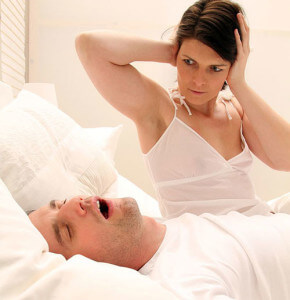 The idea of a MAD/Chinstrap combo may interest you but you may be left wondering if the SnoreTek Mouthpiece will help with your snoring. The MAD has been extensively studied and nearly all studies have concluded that such devices are effective when it comes to treating snoring and OSA. The rate of effectiveness seems to vary from one study to another but generally speaking, they seem to be effective in 80%-85% of patients studied.
The idea of a MAD/Chinstrap combo may interest you but you may be left wondering if the SnoreTek Mouthpiece will help with your snoring. The MAD has been extensively studied and nearly all studies have concluded that such devices are effective when it comes to treating snoring and OSA. The rate of effectiveness seems to vary from one study to another but generally speaking, they seem to be effective in 80%-85% of patients studied.
Snoring chinstraps, such as the SnoreTek have also been studied but not as extensively as snoring mouthpieces. The available research suggests that snoring chinstraps can also be very effective.
In my opinion, combining two products together that are proven to be effective sounds like it may be a good idea.
Guarantee
The seller of the SnoreTek combo offers a 90-day return warranty for the product purchased which can be utilized in the event that you do not see results from their product. This guarantee is an excellent selling point for those who are concerned whether or not this will help with their snoring.
Can I Use It for Mild to Moderate Obstructive Sleep Apnea?
Are you able to use the SnoreTek combo to treat mild to moderate sleep apnea? According to the manufacturer, the SnoreTek mouthpiece is “an intraoral mandibular advancement device intended to be used for the treatment of snoring and mild to moderate obstructive sleep apnea in adults.” It’s important to note that sleep apnea should only be treated under the supervision of your physician.
How Much Does The Combo Pack Cost?
 Currently, the SnoreTek chinstrap combo pack sells for $79.90 which includes shipping and handling. It appears as if the company currently only ships to US residents using 2-7 day USPS First Class shipping.
Currently, the SnoreTek chinstrap combo pack sells for $79.90 which includes shipping and handling. It appears as if the company currently only ships to US residents using 2-7 day USPS First Class shipping.
In comparison to similar style mouthpieces, this mouthpiece is average in price yet includes a bonus chinstrap which most manufacturers do not include. Considering that you receive both a mouthpiece and a chinstrap, it’s a great value.
My Trial Using The SnoreTek Mouthpiece and Chinstrap Together
 After discovering DIY Mandibular Advancement Devices several years ago, I have tested and completed several reviews on various snoring prevention mouthpieces which can be seen here. As a chronic snorer, I’m always in search of new products and enjoy testing them and sharing my experience on this blog. The combo pack is a product that I recently had the opportunity to take for a test drive. Over the course of two weeks, I tested this combo pack against my heaviest snoring.
After discovering DIY Mandibular Advancement Devices several years ago, I have tested and completed several reviews on various snoring prevention mouthpieces which can be seen here. As a chronic snorer, I’m always in search of new products and enjoy testing them and sharing my experience on this blog. The combo pack is a product that I recently had the opportunity to take for a test drive. Over the course of two weeks, I tested this combo pack against my heaviest snoring.
Upon arrival, the mouthpiece was contained within a clear clam-shell package. The package also contained a nice vented anti-microbial storage case. In addition, the package also came with one SnoreTek chinstrap. My initial thoughts were that both the mouthpiece and chinstrap were of good quality and appeared to be durable.
The Fitting Process
Before getting started, I created a custom impression of my teeth using these instructions:
- Ensure that the white plug is fully inserted into the opening at the front.
- Boil a pot of water and allow to cool for one minute.
- Completely immerse the mouthpiece for a total of two minutes. A spoon will help to hold the mouthpiece under water as it has a tendency to float.
- Carefully remove the mouthpiece using a pair of tongs. Ensure that the mouthpiece is not too hot before moving onto the next step.
- Insert the centered mouthpiece with the “V’ notch facing up and bite down. While biting down, push your lower teeth outward. When properly completed, the white airway plug will rise up.
- Once in position, suck in and use your fingers to press the mouthpiece against the outside of your teeth and use your tongue to press the mouthpiece against the inside of your teeth.
- Keep the mouthpiece in for about a minute and then submerge in cold water to finalize it.
- Check for fit. If you were unable to achieve a good fit, you can try to refit up to 4-5 more times.
I’m quite familiar with fitting boil and bite mouthpieces so this one was very simple and straight forward. Within 5 minutes, I had a nice close fit and my mouthpiece was ready to put to the test.
Putting It to the Test
 Before going to bed I inserted the mouthpiece inside of my mouth and then placed the chinstrap around my jaw and over my head. Once everything was in place, it was clear that this mouthpiece was not going anywhere. One of the biggest complaints when it comes to snoring mouthpieces is the fact that some designs have a tendency to fall out while asleep. When the morning comes around, the mouthpiece ends up in your bed. Combining the mouthpiece and chinstrap seemed to be a clever idea.
Before going to bed I inserted the mouthpiece inside of my mouth and then placed the chinstrap around my jaw and over my head. Once everything was in place, it was clear that this mouthpiece was not going anywhere. One of the biggest complaints when it comes to snoring mouthpieces is the fact that some designs have a tendency to fall out while asleep. When the morning comes around, the mouthpiece ends up in your bed. Combining the mouthpiece and chinstrap seemed to be a clever idea.
With my wife close by monitoring my snoring, I quickly fell asleep. In the morning I woke up with mouthpiece and chinstrap intact. My wife reported that the SnoreTek had completely eliminated the sound of my snoring, which of course was great news!
The mouthpiece itself was comfortable and fairly compact. It didn’t cause any irritation although I did experience some drooling which sometimes occurs while using this style of snoring mouthpiece. The drooling typically only lasts for a couple of days.
I was pleased with the results of this mouthpiece and chinstrap combo but wanted to test it for a longer period of time to ensure that it would deliver consistent results. Over the next two weeks, I continued to use the two together and experienced great results night after night. The snoring was gone so the SnoreTek received my wife’s seal of approval.
Concluding Thoughts and Recommendation
 Overall, this combo exceeded my expectations and prove itself as a mouthpiece worthy of consideration for purchase. The combination of using a mouthpiece and chinstrap together is something that I have never considered in the past but would now highly recommend, especially if you have experienced issues with your mouthpiece falling out in the middle of the night. The SnoreTek chinstrap did an excellent job of securing the mouthpiece while helping to hold my jaw forward.
Overall, this combo exceeded my expectations and prove itself as a mouthpiece worthy of consideration for purchase. The combination of using a mouthpiece and chinstrap together is something that I have never considered in the past but would now highly recommend, especially if you have experienced issues with your mouthpiece falling out in the middle of the night. The SnoreTek chinstrap did an excellent job of securing the mouthpiece while helping to hold my jaw forward.
The manufacturer claims that their product could last up to two years, which is a plus. They also offer a 90-day money back guarantee which is also good to know.
I was impressed by the size of the breather hole which allowed ample air through. This is an important consideration if you have a tendency to breathe through your mouth while you sleep or have problems breathing thru your nose.
Being BPA free as well as FDA cleared are features that I always look for in a snoring mouthpiece. Keep in mind, a snoring mouthpiece will be inside of your mouth for several hours each and every night. You want to ensure that you are using a product that is safe.
The SnoreTek Mouthpiece is hands down effective when used with the provided SnoreTek chinstrap.
For $79.90 including shipping, it’s an excellent value and definitely worth purchasing. Needless to say, I would highly recommend this product.
Pros
- US Dentist approved & Made in the UK
- Unique combination comes with both mouthpiece and a chinstrap
- FDA Cleared, BPA Free & Latex Free
- 90 Day money back guarantee
- Large front breather hole
- Simple 1 piece design is easy to fit
- Lasts up to 2 years
Cons
- Can only be adjusted 4-5 times before material becomes compromised
- Only available in clear
Share This Post:

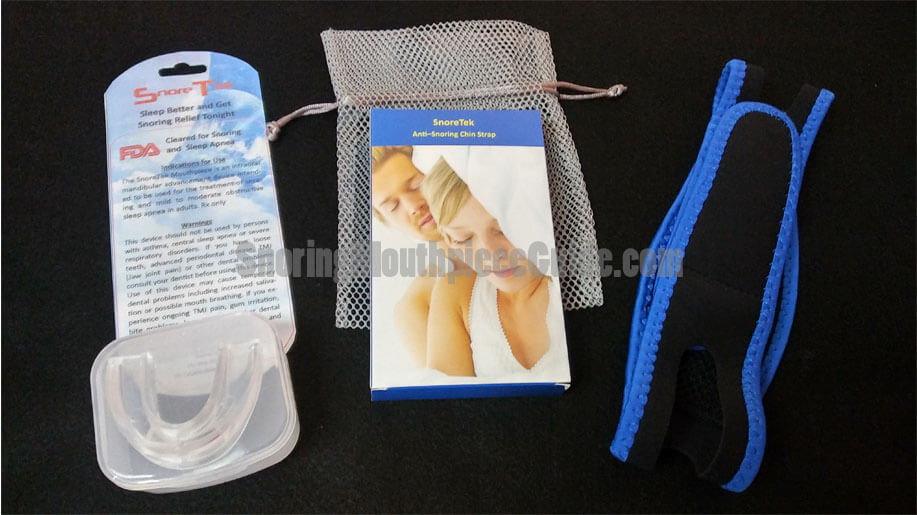
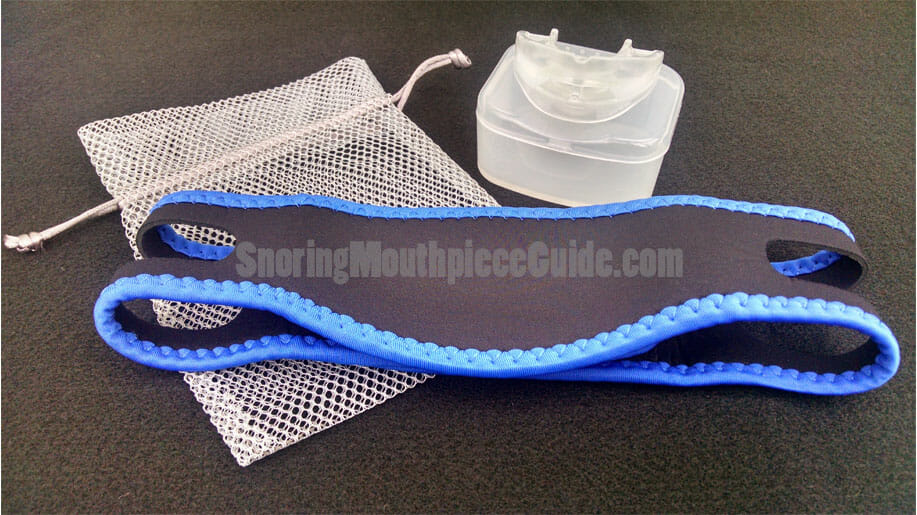
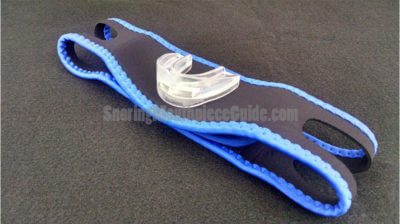
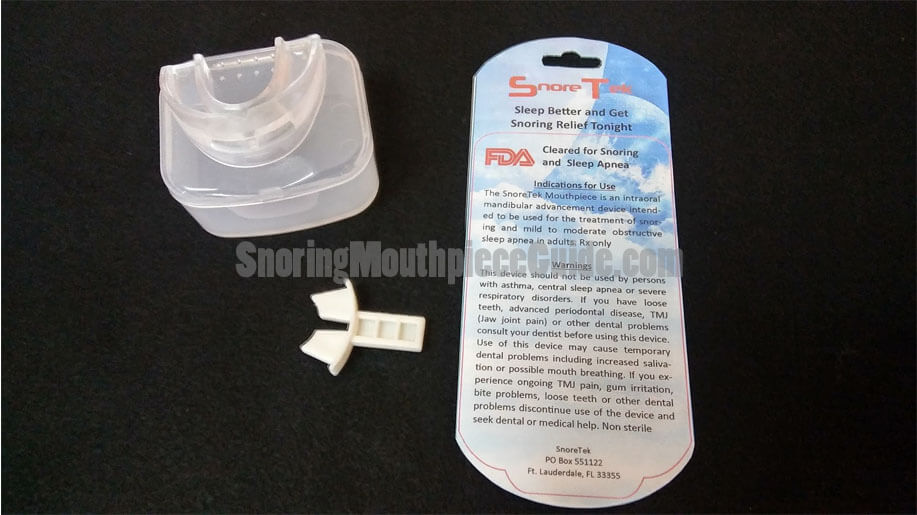
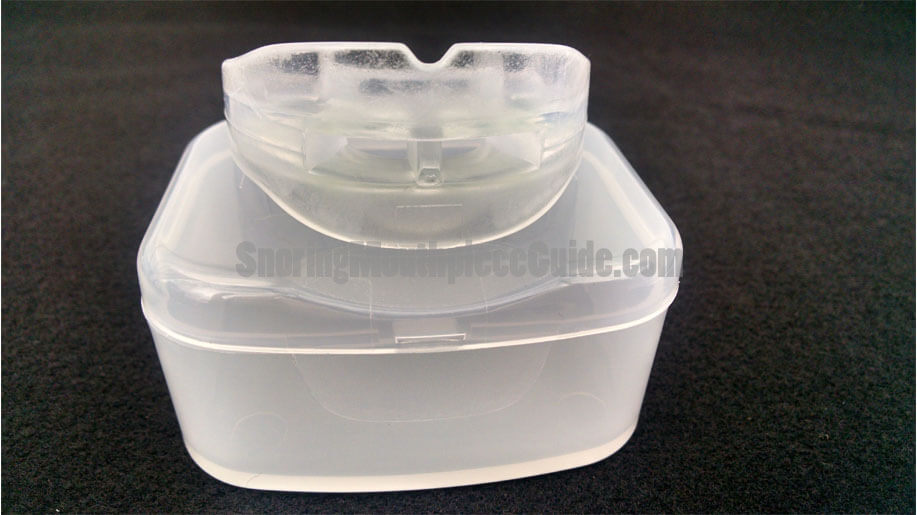
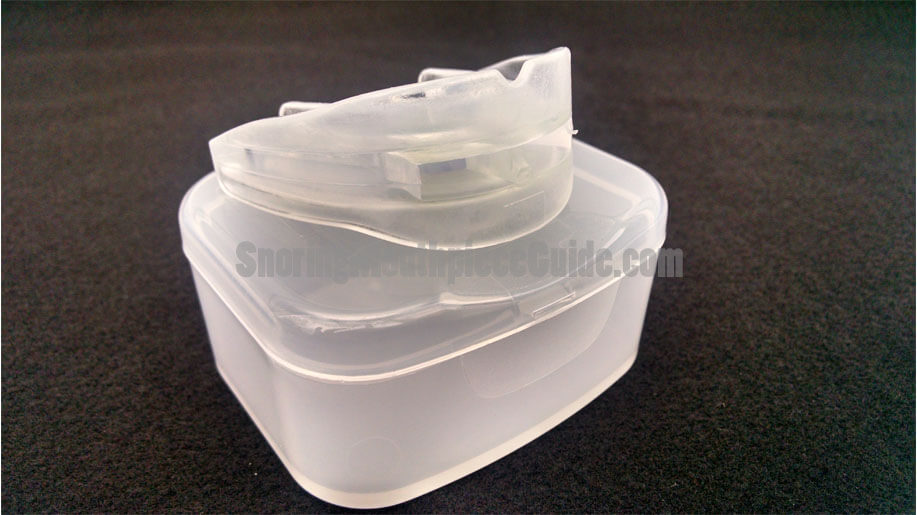
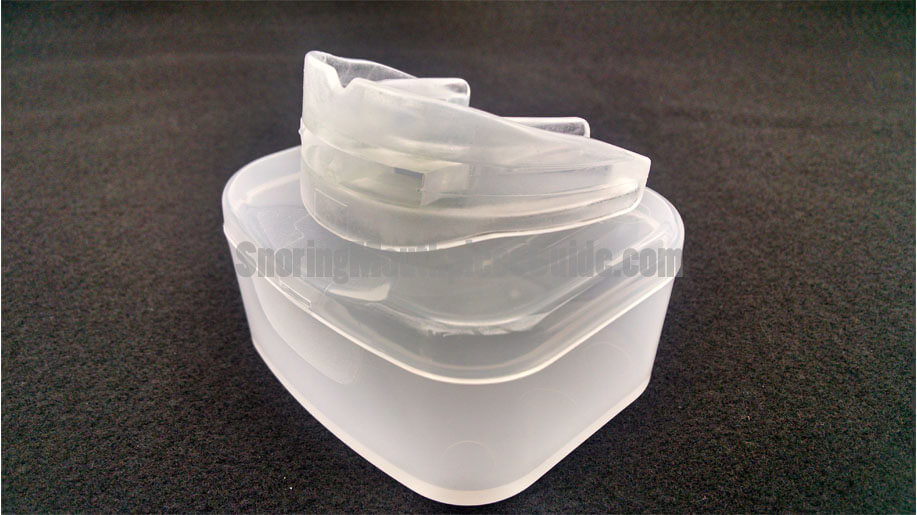
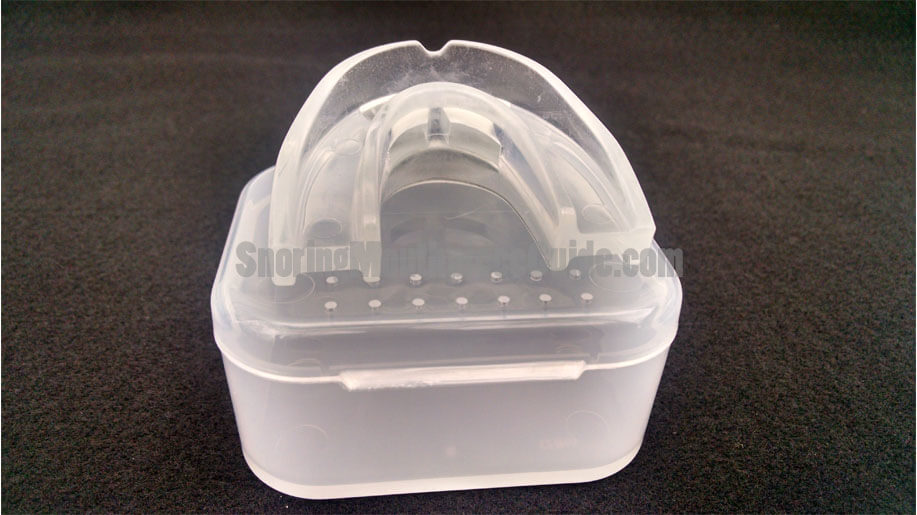
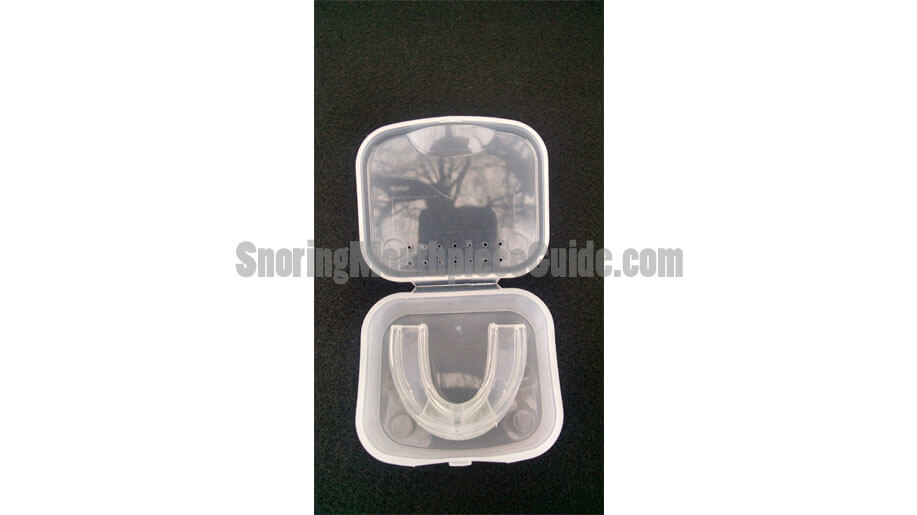
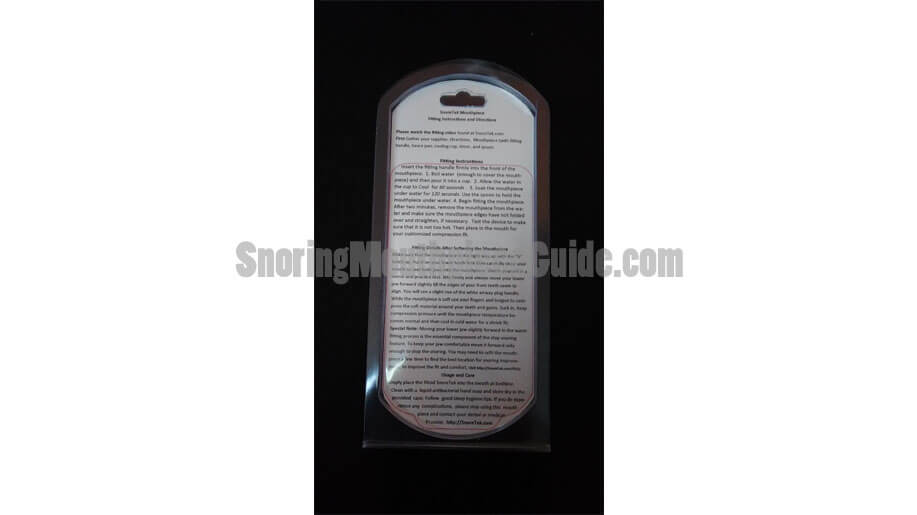
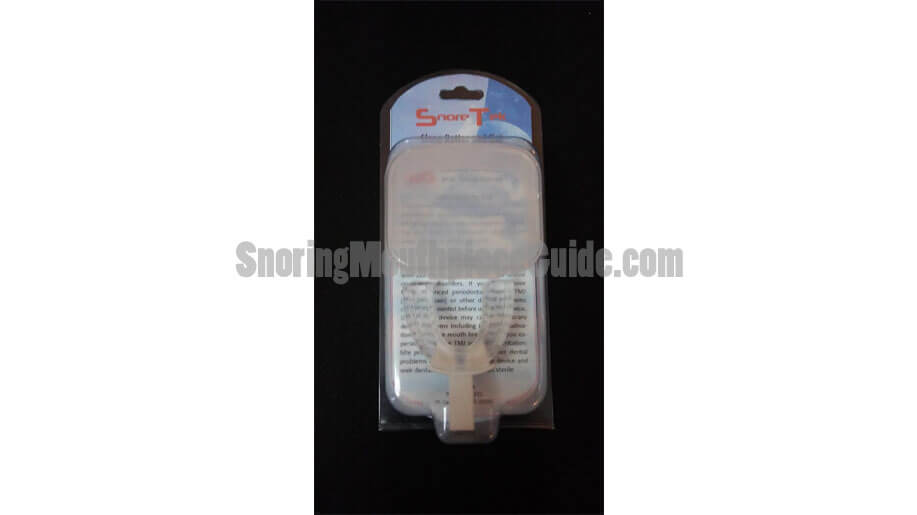


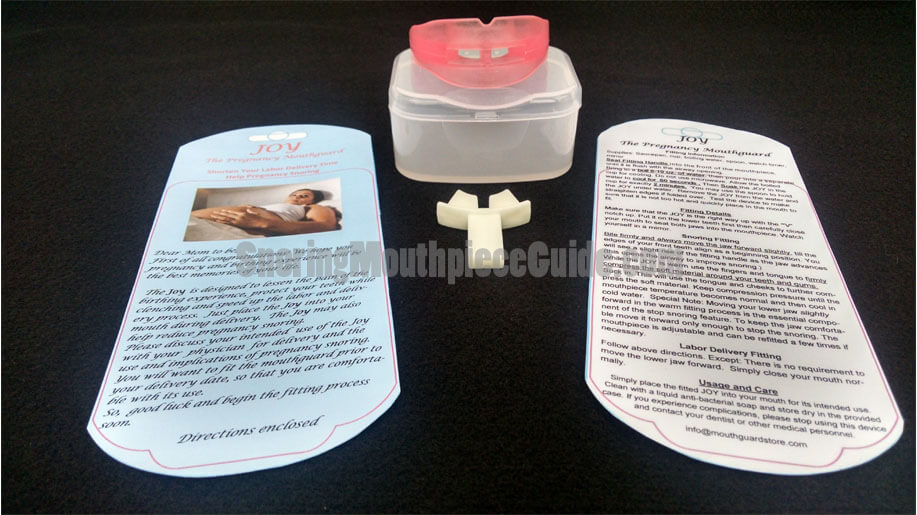
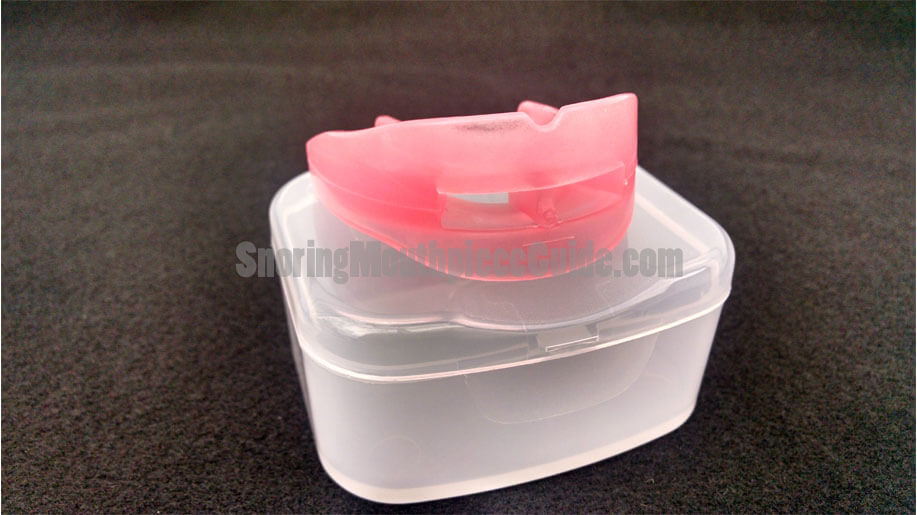

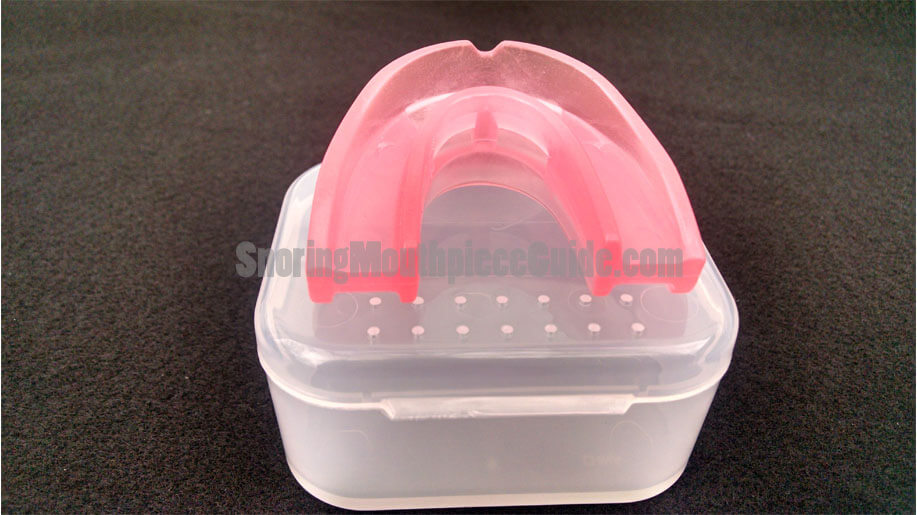
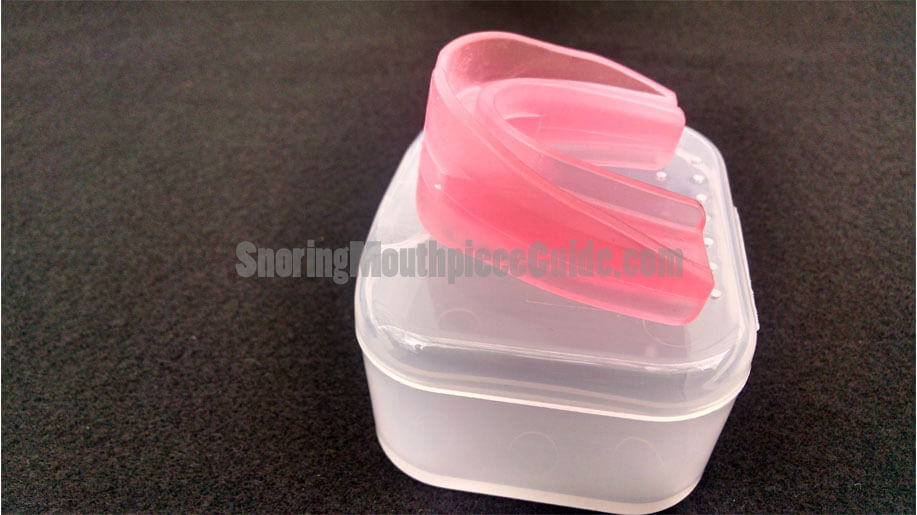

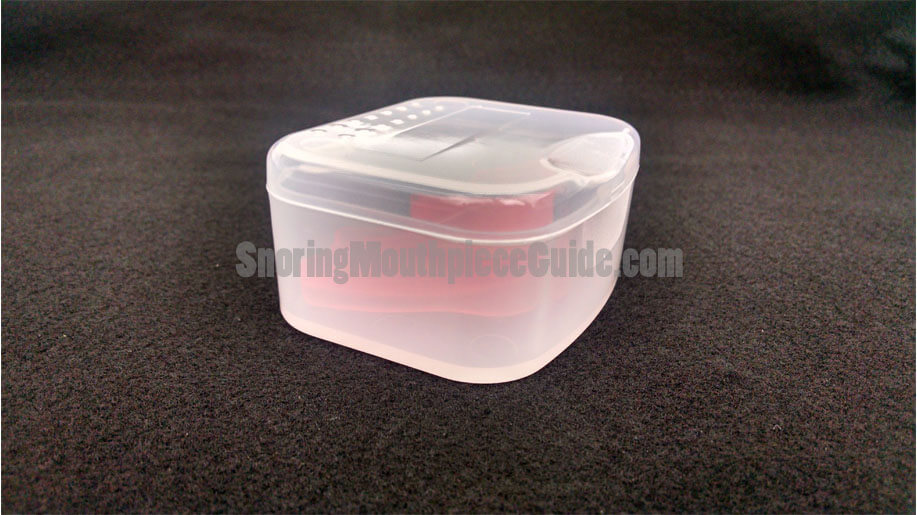
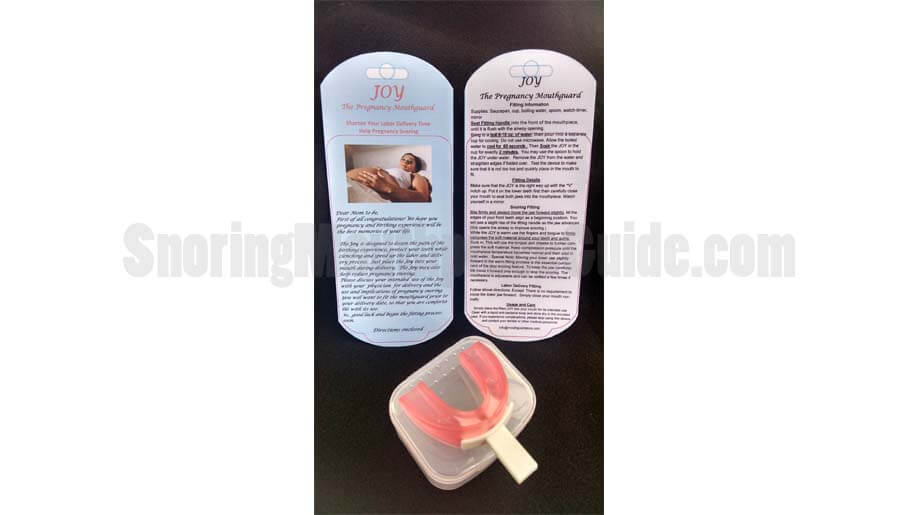




 When you have a problem, you want a permanent solution and not just a temporary fix, right? If your problem is snoring, this statement especially rings true.
When you have a problem, you want a permanent solution and not just a temporary fix, right? If your problem is snoring, this statement especially rings true.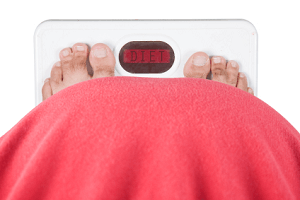 Preventing snoring may be as easy as losing a few pounds. Before going any further, I would like to emphasize that not all who snore are overweight and not all who are
Preventing snoring may be as easy as losing a few pounds. Before going any further, I would like to emphasize that not all who snore are overweight and not all who are 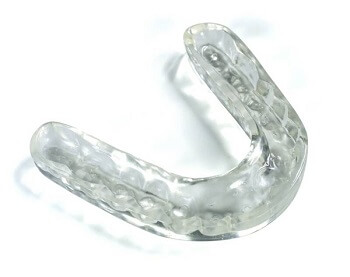 Perhaps you have tried to lose weight or simply have no interest in doing so. Is there an easier solution?
Perhaps you have tried to lose weight or simply have no interest in doing so. Is there an easier solution? When using you’re a mouthpiece as a permanent solution, you should always use it as directed by the manufacturer. Keep in mind that a part of following the manufacturer’s instruction involves accurately answering their questionnaire prior to purchase. Such questionnaires are designed to determine if you can safely use their product. The company who is selling the mouthpiece is required to ask questions about your oral health such as “Do you have any loose teeth?” or “Does your jaw make a popping noise when chewing or speaking?”. These questions help them to determine if a mouthpiece is a safe solution in your particular case.
When using you’re a mouthpiece as a permanent solution, you should always use it as directed by the manufacturer. Keep in mind that a part of following the manufacturer’s instruction involves accurately answering their questionnaire prior to purchase. Such questionnaires are designed to determine if you can safely use their product. The company who is selling the mouthpiece is required to ask questions about your oral health such as “Do you have any loose teeth?” or “Does your jaw make a popping noise when chewing or speaking?”. These questions help them to determine if a mouthpiece is a safe solution in your particular case.
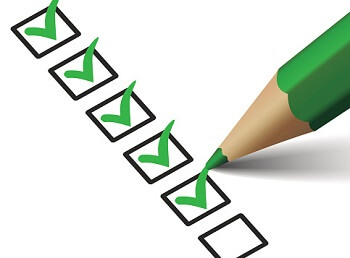
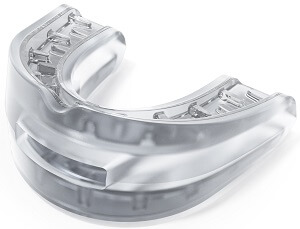
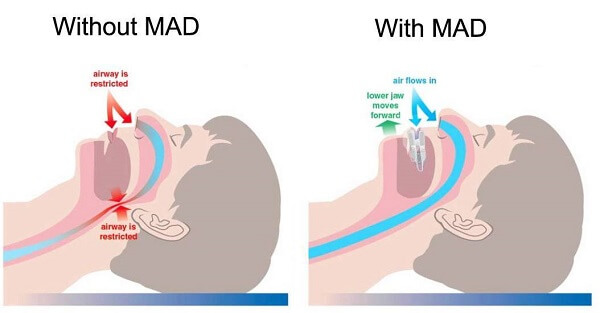 Snoring mouthpieces are actually considered Mandibular Advancement Devices (MAD) and were invented well over 30 years ago to help those with Sleep Apnea. While the snoring mouthpiece works using the same principle, it should only be used to lessen the sound of snoring and not necessarily to treat OSA. If you suspect that your husband’s snoring is being caused by OSA, he should
Snoring mouthpieces are actually considered Mandibular Advancement Devices (MAD) and were invented well over 30 years ago to help those with Sleep Apnea. While the snoring mouthpiece works using the same principle, it should only be used to lessen the sound of snoring and not necessarily to treat OSA. If you suspect that your husband’s snoring is being caused by OSA, he should  Here are 5 buying tips that you may want to keep in mind if you decide to give the snoring mouthpiece a try:
Here are 5 buying tips that you may want to keep in mind if you decide to give the snoring mouthpiece a try: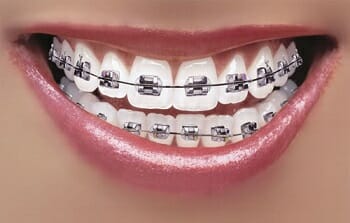 According to the American Association or Orthodontics, it’s estimated that over 1.2 million adults in the United States are wearing braces to straighten their teeth and to obtain a beautiful smile. It’s also estimated that around 50% of adults snore, meaning that there are at least 600,000 adult snorers out there, some who are considering a snoring mouthpiece and are interested in this one question:
According to the American Association or Orthodontics, it’s estimated that over 1.2 million adults in the United States are wearing braces to straighten their teeth and to obtain a beautiful smile. It’s also estimated that around 50% of adults snore, meaning that there are at least 600,000 adult snorers out there, some who are considering a snoring mouthpiece and are interested in this one question: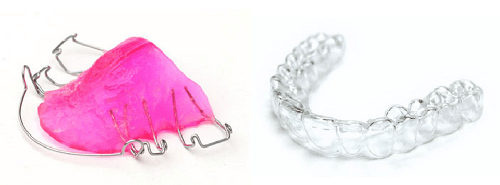
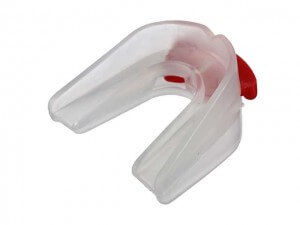
 There has been quite a bit of attention drawn towards snoring these days. Millions of us either snore or deal with a snoring partner each night. Aside from being a nuisance for your partner, did you know that snoring can actually kill you? To be more specific, the act of snoring doesn’t actually kill, but it’s often a symptom of a more serious medical condition known as
There has been quite a bit of attention drawn towards snoring these days. Millions of us either snore or deal with a snoring partner each night. Aside from being a nuisance for your partner, did you know that snoring can actually kill you? To be more specific, the act of snoring doesn’t actually kill, but it’s often a symptom of a more serious medical condition known as 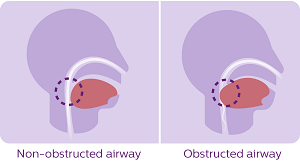 As mentioned, benign snoring is not an issue while sleep apnea is. Is there a way to tell if your snoring is just snoring or if it’s an indication of sleep apnea? Only a properly trained medical professional can determine the likelihood and ultimately diagnose sleep apnea through a test known as a sleep study. Your doctor may have you complete a questionnaire such as the STOP-BANG before deciding your risk for OSA and whether or not further testing is warranted.
As mentioned, benign snoring is not an issue while sleep apnea is. Is there a way to tell if your snoring is just snoring or if it’s an indication of sleep apnea? Only a properly trained medical professional can determine the likelihood and ultimately diagnose sleep apnea through a test known as a sleep study. Your doctor may have you complete a questionnaire such as the STOP-BANG before deciding your risk for OSA and whether or not further testing is warranted.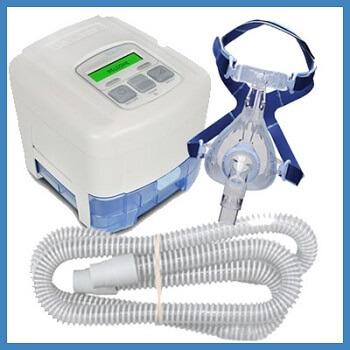
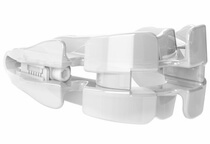 In many cases, snoring is simply benign snoring and is harmless with the exception of the damage that it can do to relationships. Where snoring is simply, well snoring, there are a number of snoring solutions out there that can help. One of the most effective solutions is the snoring mouthpiece which functions using the same concept as the mandibular advancement devices that are prescribed by your doctor.
In many cases, snoring is simply benign snoring and is harmless with the exception of the damage that it can do to relationships. Where snoring is simply, well snoring, there are a number of snoring solutions out there that can help. One of the most effective solutions is the snoring mouthpiece which functions using the same concept as the mandibular advancement devices that are prescribed by your doctor.
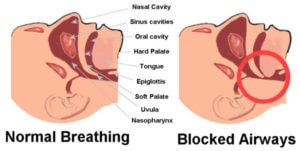

 sleep on your back; this causes a blocked airway and snoring. By sleeping on your side, the muscles still relax, however, they do not cover the airway since you are on your side. Studies show sleeping on your left side not only prevents snoring but is beneficial for your health overall. It improves digestion and filters toxins and wastes more quickly. This may be one of the simplest solutions to prevent pregnancy snoring.
sleep on your back; this causes a blocked airway and snoring. By sleeping on your side, the muscles still relax, however, they do not cover the airway since you are on your side. Studies show sleeping on your left side not only prevents snoring but is beneficial for your health overall. It improves digestion and filters toxins and wastes more quickly. This may be one of the simplest solutions to prevent pregnancy snoring.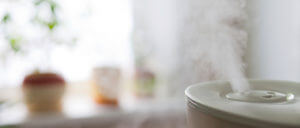
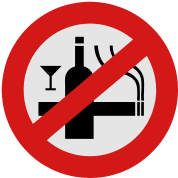 You should not use tobacco or be around second-hand smoke during pregnancy. Not only is smoking bad for the fetus but it can also be the cause of your snoring during pregnancy. The same goes for drinking alcohol and taking sleeping pills, as the use of these products is more likely to narrow your airway in your throat, which will block the flow of air and increase your chance of snoring.
You should not use tobacco or be around second-hand smoke during pregnancy. Not only is smoking bad for the fetus but it can also be the cause of your snoring during pregnancy. The same goes for drinking alcohol and taking sleeping pills, as the use of these products is more likely to narrow your airway in your throat, which will block the flow of air and increase your chance of snoring.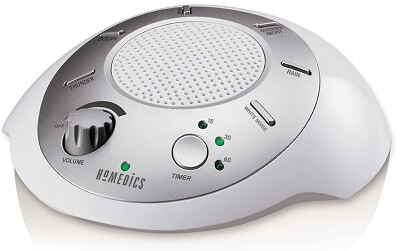 Sleeping next to a partner who snores is not only frustrating but may even cause you to lose sleep, placing a strain on your relationship. Snoring is an issue that affects an estimated 40% – 50% of the US population. It’s no wonder why anti-snoring products are a multi-billion dollar industry. As for solutions, there’s everything from dietary supplements to snoring mouthpieces, and then there’s the
Sleeping next to a partner who snores is not only frustrating but may even cause you to lose sleep, placing a strain on your relationship. Snoring is an issue that affects an estimated 40% – 50% of the US population. It’s no wonder why anti-snoring products are a multi-billion dollar industry. As for solutions, there’s everything from dietary supplements to snoring mouthpieces, and then there’s the 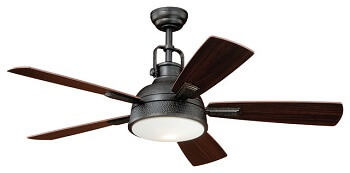 Not only can a ceiling fan provide air circulation, cooling, and light, it also produces white noise. The hum of a ceiling fan and sometimes off-balance rocking can be a soothing source of white noise. The older and less expensive models produce the more white noise while the newer, more expensive models are typically not nearly as effective. While the sound of a ceiling fan can be somewhat faint, it may be just enough to mask your partners snoring and allow you to
Not only can a ceiling fan provide air circulation, cooling, and light, it also produces white noise. The hum of a ceiling fan and sometimes off-balance rocking can be a soothing source of white noise. The older and less expensive models produce the more white noise while the newer, more expensive models are typically not nearly as effective. While the sound of a ceiling fan can be somewhat faint, it may be just enough to mask your partners snoring and allow you to  An excellent source of white noise is your television. If you have a TV in your bedroom, give this a try. Tune your television to a channel that does not have a signal. Such channels typically show white/gray/black flashing dots which are often referred to as “snow”. Before going to bed, turn on the television to this station and increase the volume until the sound of their snoring is masked. Understand that adjusting the volume too loud may be counterproductive and actually keep you awake. The idea is to strike a balance and mask the sound of snoring so that it doesn’t become distracting and not being so loud that it keeps you awake.
An excellent source of white noise is your television. If you have a TV in your bedroom, give this a try. Tune your television to a channel that does not have a signal. Such channels typically show white/gray/black flashing dots which are often referred to as “snow”. Before going to bed, turn on the television to this station and increase the volume until the sound of their snoring is masked. Understand that adjusting the volume too loud may be counterproductive and actually keep you awake. The idea is to strike a balance and mask the sound of snoring so that it doesn’t become distracting and not being so loud that it keeps you awake.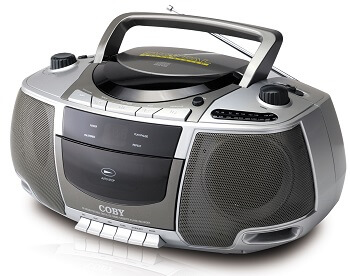 Similar to a television, a radio can also produce soothing white noise. To achieve this, simply tune your radio to a station with no reception. Try this on both AM and FM frequencies as there’s a slight difference in sound. Adjust the volume to a comfortable level that helps to cancel out the sound of your partners snoring. Once again, don’t adjust the volume too loud as this will keep you awake.
Similar to a television, a radio can also produce soothing white noise. To achieve this, simply tune your radio to a station with no reception. Try this on both AM and FM frequencies as there’s a slight difference in sound. Adjust the volume to a comfortable level that helps to cancel out the sound of your partners snoring. Once again, don’t adjust the volume too loud as this will keep you awake. A number of websites offer white noise sound generators. These sound generators are often free and allow you to adjust settings such as volume, intensity, and even the type of noise. There are several sites with excellent interfaces that work from your browser and are easy to use. All you need is a computer, internet connection, and a good set of speakers. After locating a site that you prefer and setting the sound to the desired level, be sure to turn off your monitor to save power and prevent distractions from the light.
A number of websites offer white noise sound generators. These sound generators are often free and allow you to adjust settings such as volume, intensity, and even the type of noise. There are several sites with excellent interfaces that work from your browser and are easy to use. All you need is a computer, internet connection, and a good set of speakers. After locating a site that you prefer and setting the sound to the desired level, be sure to turn off your monitor to save power and prevent distractions from the light.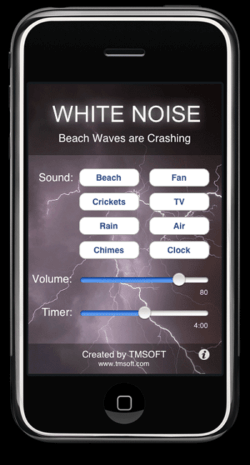 A “smarter” alternative to using a computer is to use an app on your smartphone or a tablet. Like the desktop computer, there are several apps that can be downloaded, often at no charge. These apps are available for both Android and iOS. For improved performance, consider pairing your smartphone with a sound box using Bluetooth. This will provide better sound quality and will also allow you to place the speaker in any desired position around your bedroom.
A “smarter” alternative to using a computer is to use an app on your smartphone or a tablet. Like the desktop computer, there are several apps that can be downloaded, often at no charge. These apps are available for both Android and iOS. For improved performance, consider pairing your smartphone with a sound box using Bluetooth. This will provide better sound quality and will also allow you to place the speaker in any desired position around your bedroom.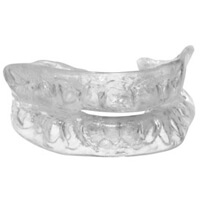 After trying some or all of these ideas, you may find that nothing seems to drown out your partners snoring. When this occurs, you may be tempted to give earplugs a try. Unfortunately, earplugs may also prevent you from hearing your alarm clock in the morning or may prevent you from hearing the sound of a smoke or carbon monoxide alarm which can be dangerous.
After trying some or all of these ideas, you may find that nothing seems to drown out your partners snoring. When this occurs, you may be tempted to give earplugs a try. Unfortunately, earplugs may also prevent you from hearing your alarm clock in the morning or may prevent you from hearing the sound of a smoke or carbon monoxide alarm which can be dangerous.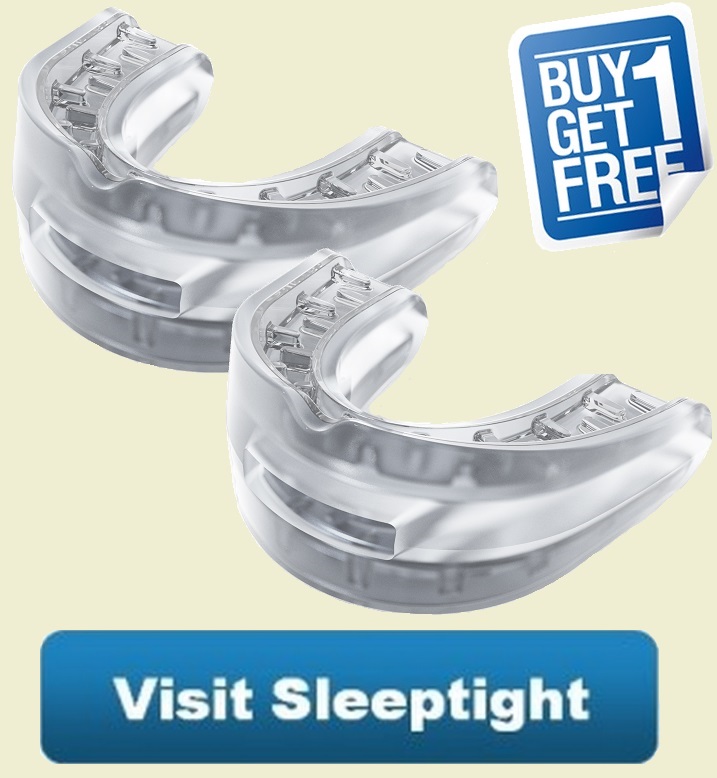
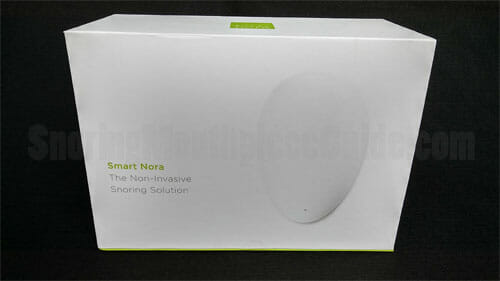
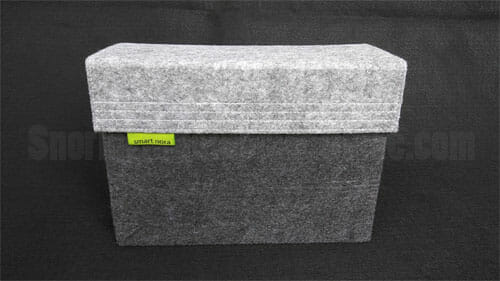
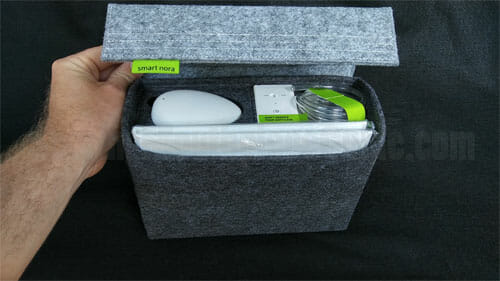
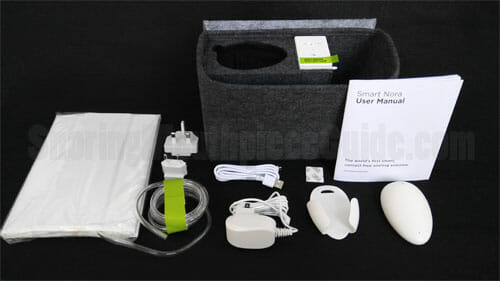



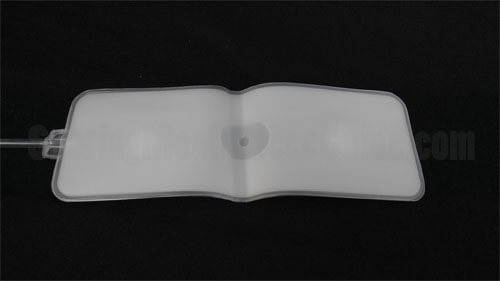
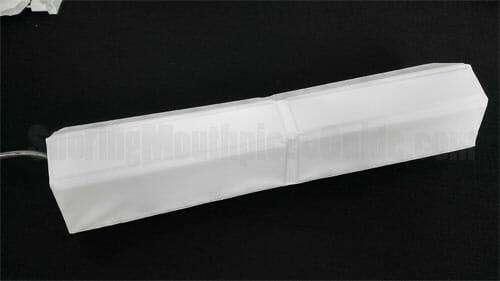
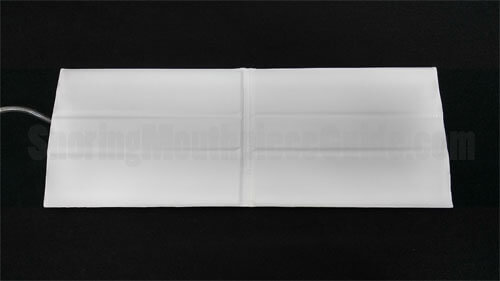
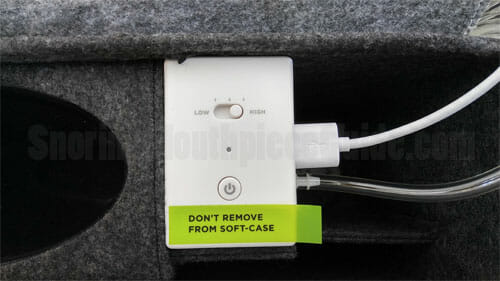
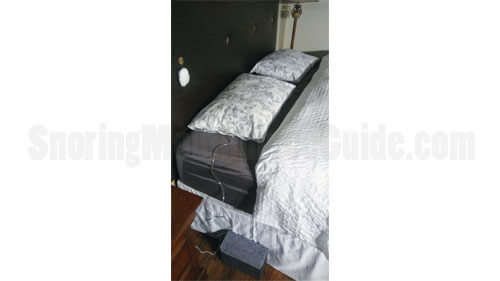
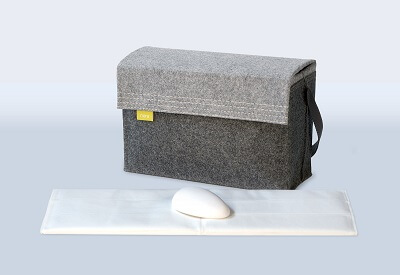 Every product has a story behind it, including Smart Nora.
Every product has a story behind it, including Smart Nora.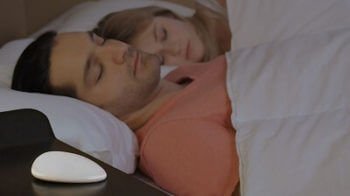 The Smart Nora Smart Snoring Solution is an innovative anti-snoring device that’s unlike anything that is currently on the market such as mouthpieces, chinstraps, nose strips, nose clips, throat spray, herbal remedies, etc. In fact, with Smart Nora, you don’t wear, ingest or attach anything to your body.
The Smart Nora Smart Snoring Solution is an innovative anti-snoring device that’s unlike anything that is currently on the market such as mouthpieces, chinstraps, nose strips, nose clips, throat spray, herbal remedies, etc. In fact, with Smart Nora, you don’t wear, ingest or attach anything to your body.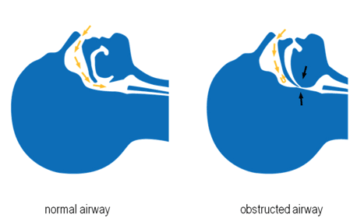 This device sounds very interesting but how does raising or lowering the head control snoring?
This device sounds very interesting but how does raising or lowering the head control snoring? So how much will you pay for the Smart Nora? When the Kickstarter campaign was initially launched in 2015, the first backers were able to pre-order theirs for $179. Today, they are priced at $299 with an occasional discount of $41, bringing the total to $259 with free shipping to both the US and Canada. International shipping is also available for an additional charge.
So how much will you pay for the Smart Nora? When the Kickstarter campaign was initially launched in 2015, the first backers were able to pre-order theirs for $179. Today, they are priced at $299 with an occasional discount of $41, bringing the total to $259 with free shipping to both the US and Canada. International shipping is also available for an additional charge. According to the National Sleep Foundation, approximately
According to the National Sleep Foundation, approximately 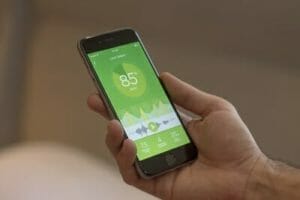 While fully functional without an app, Smart Nora can sync with your smartphone to provide audio recordings of your snoring as well as other information on your sleeping habits such as the number of hours you slept, the number of times Smart Nora was activated, and the peak decibel level of your snoring. This valuable information can help you to track and better understand the effectiveness of the Smart Nora.
While fully functional without an app, Smart Nora can sync with your smartphone to provide audio recordings of your snoring as well as other information on your sleeping habits such as the number of hours you slept, the number of times Smart Nora was activated, and the peak decibel level of your snoring. This valuable information can help you to track and better understand the effectiveness of the Smart Nora. A common question asked by those who have placed a pre-order is “When will I receive my Smart Nora?”.
A common question asked by those who have placed a pre-order is “When will I receive my Smart Nora?”.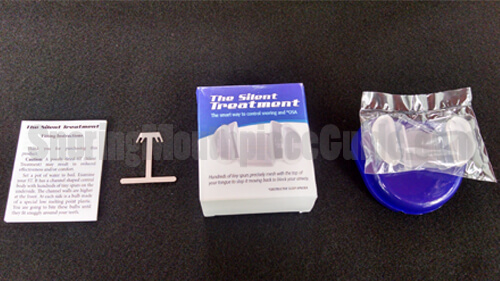
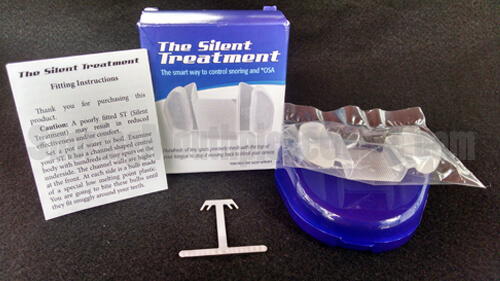
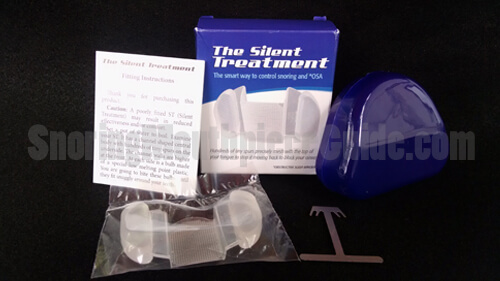
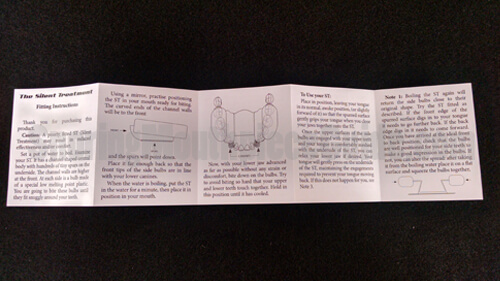
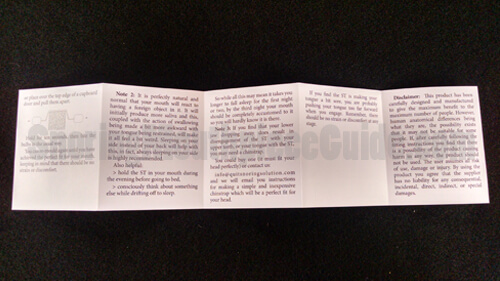
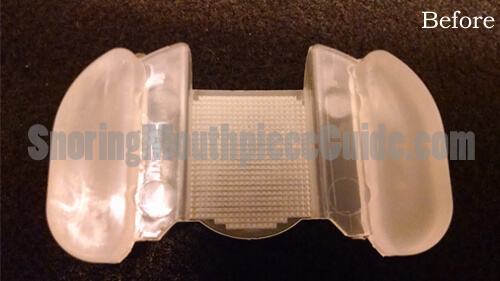
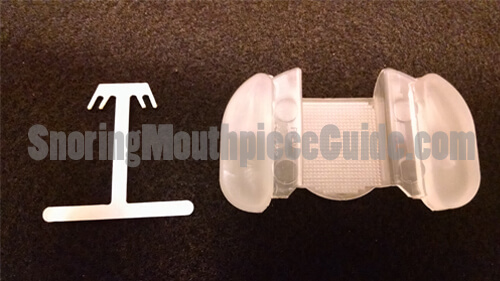
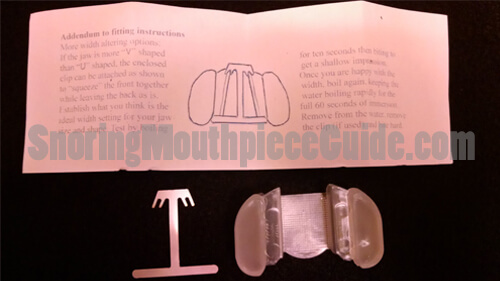
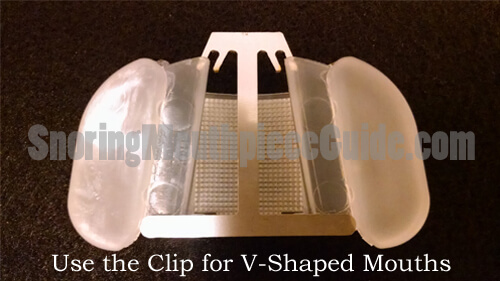
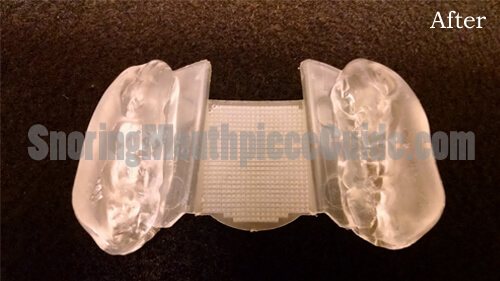

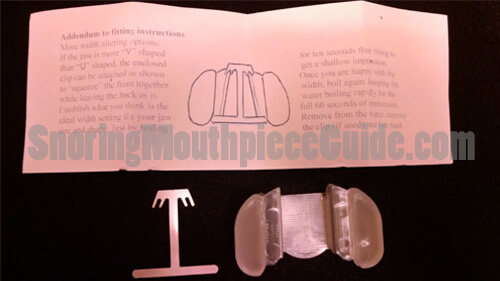
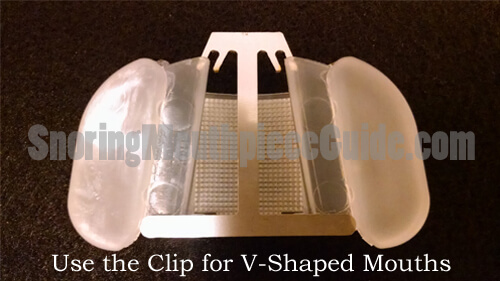 through and have my top and bottom teeth touch. I waited for a minute or so until the device cooled down and then removed it from my mouth and ran it under cool water. I allowed it to dry and placed it in the storage container that was included in my box and stored it on my nightstand ready for the approaching evening’s use.
through and have my top and bottom teeth touch. I waited for a minute or so until the device cooled down and then removed it from my mouth and ran it under cool water. I allowed it to dry and placed it in the storage container that was included in my box and stored it on my nightstand ready for the approaching evening’s use.